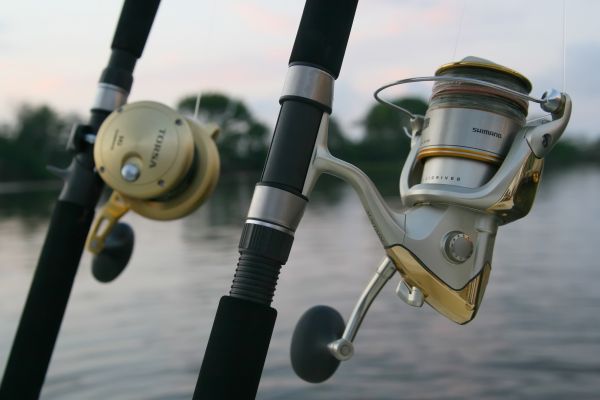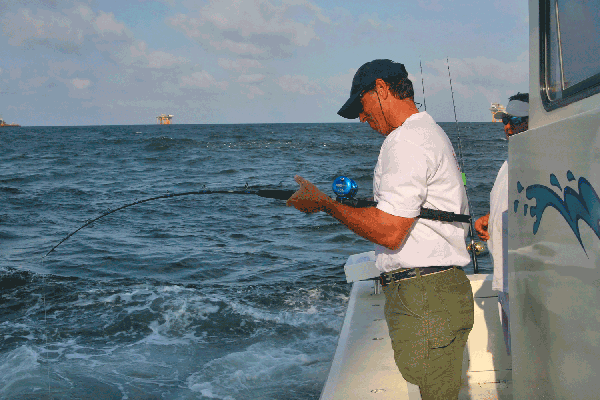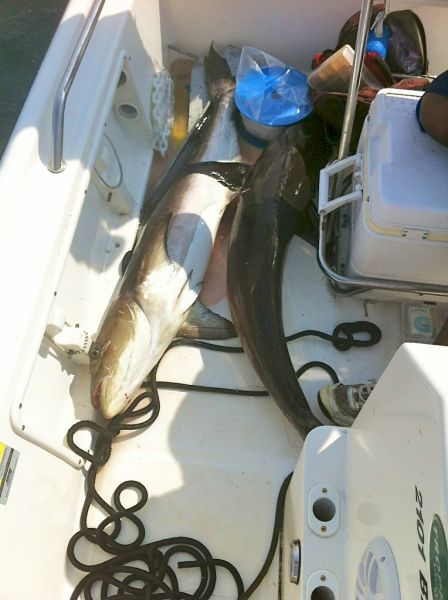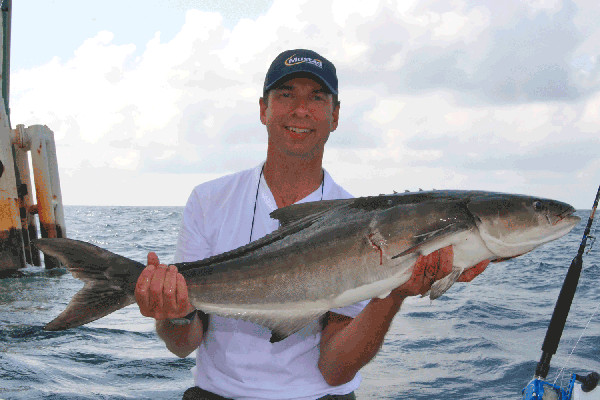Anglers can head to the West Delta rigs to take advantage of the cobia invasion as these hard fighters make their way eastward.
The shallow West Delta rigs are in kind of a funny place, as far as cobia are concerned. One would think that, as they make their migration across the Gulf Coast from Florida to Texas, cobia would stack up on the West Delta rigs during the spring, but that’s not the case. They do eventually occupy the West Delta rigs, but it’s not until September as they migrate along the Gulf Coast back to Florida. Why would they invade the West Delta rigs in September but not the spring?
He’s not going to argue with a marine biologist about it, but Capt. Gray Long with Go Long Charters (225-252-5315 or golongcharters.com) believes he has the answer.
“You hear about the cobia migration in early spring,” he said. “They come our way from Florida, and we catch them on the east side of the river that time of year. But then it’s like they hit South Pass and Southwest Pass and kind of go in a straight line across toward Grand Isle and Cocodrie on their way to Texas.”
Cobia migration

Because the Plaquemines Parish coast juts out so much at the mouth of the Mississippi River, cobia just don’t make that hard turn back to the north through West Bay and up toward Empire and Buras just so they can stay on the coast.
He’s also not going to argue that anglers couldn’t catch cobia on the West Delta rigs as they migrate to the west, but Long knows nobody’s going to catch them on the same West Delta rigs in the spring as they will in September.
“You may catch some out on the snapper rigs in 200 feet of water, but during September you’re going to find the cobia stacked up on rigs as shallow as 30 to 60 feet — not 10 miles from the mouth of Red Pass.”
Why the sudden move to the shallow rigs during September? According to Long and most other offshore charter captains running out of Venice and Grand Isle, it’s because the cobia migrate differently on their way out than they do on their way in.
“When they come back, I think they kind of follow the coast back around,” Long speculated. “And since there’s nothing jutting out to stop them, they come into West Delta before they have to make their turn to get around Southwest Pass.”
In other words, their migration eastward takes them right into the shallow West Delta rigs during September whereas during their westward migration they almost avoid the same area completely.
The West Delta rigs

If you’re not familiar with West Delta, it is an expansive oil field that covers somewhat of a triangular area with the base of it roughly being a line from Southwest Pass toward Grand Isle and the tip of it being to the north of that line up toward Empire.
It’s all standing rigs that range in size from really tall, massive rigs to smaller, single-pipe, standalone satellite rigs.
But as far as Long is concerned, there’s only one kind of rig to target for cobia during September.

“I like the small, standalone rigs,” he said. “I don’t know if it’s just because they are easier to target or what, but when you go to fish them, you can cover the whole area, where (at) a big old rig you wouldn’t be able to get to all the area. I’m mostly looking for single-pipe satellite rigs.”
And since cobia could be on any of these kinds of rigs in 30 to 60 feet of water, Long advised anglers to head out of Red Pass and start hitting any of the right kind of rigs in the right depth.
“As far as numbers and blocks go, I don’t have anything specific,” he said. “But if somebody would start hitting any of the satellite rigs as soon as they hit 30 feet of water, that’s pretty specific.
“All of them can have cobia on them.”
What to look for

Long typically fishes these rigs after he wraps up a day of tuna fishing. Since he’s mainly fishing shrimp boats way out in West Delta anyway during September and October, it’s easy for him to hit the cobia on the way back in.
That means he’s usually fishing the cobia rigs later in the afternoon. But Long knows some anglers launch with their only goal being to target shallow cobia.
In other words, time of day doesn’t seem to matter, and anglers could reasonably expect to catch 10 to 12 cobia off just a few rigs.
Long said looking for these West Delta cobia is kind of like looking for schools of speckled trout because you’re going to know quickly if the fish are there or not.
“I’m not going to spend an hour at a rig beating my head against the wall trying to get them,” he explained. “If they are there, they’re usually going to come up and show themselves or definitely start biting.
“I give each rig maybe 10 or 15 casts. If nothing’s going in, it’s time to move.”
One of the single factors that Long could identify as determining which rigs would be productive would have to be water clarity: Although Long’s sure cobia are in dirty water, he favors fairly clean water.

“I’m not talking about blue water like we’re tuna fishing, but I like some visibility to it — maybe gin-colored green,” he said. “A lot of wind can muddy it up, but generally 5 to 10 knots from any direction (and) it stays fairly clear. We can get some spots that are a little dirty on top, but it’s clear right underneath.”
The game plan
Long’s strategy to finding cobia is to approach a rig and make a couple circles around it. Cobia are curious fish, and this kind of activity over their heads is often enough to pull them right up to the surface.
If they come right up, he knows he’s hit the jackpot, and he starts sight-fishing them with jigs.

If they don’t come up, he allows a jig to fall all the way to the bottom and then starts working it up.
“Pay attention to any fish you hook down deeper because he’s usually going to have five or six buddies coming up with him,” Long noted. “The other guys on the boat need to be ready to pitch a jig right on front of one.
“If they get hardheaded, you can pitch some live bait or some fresh dead bait in there and catch them.”
As far as all the other crazy things anglers do to attract cobia, Long leaves all the paddle-banging, motor-tapping shenanigans to them.
“You cover enough ground and hit enough rigs, and you’re going to find them,” Long said. “Then all you need is a jig or some bait.
“With an average size of 25 to 30 pounds — with some over 50 — it’s a great way to spend a September day.”
Now there’s an argument that not even a marine biologist could disagree with.



